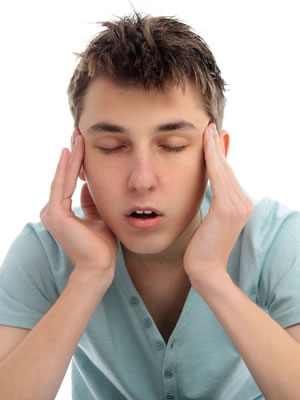- Home
- About
- Patient Center
- Dental Services
- Implants
- Cosmetic
- Orthodontics
- Blog
- Contact
TMJ-TMD
TEMPOROMANDIBULAR DISORDER (TMD)
Millions of Americans suffer from chronic facial, neck, and even back pain as well as recurring headaches due to TMD. The cause of TMD is still unknown; however, we do know it is attributed to some factors including:
- Trauma
- Bruxium (clenching and grinding of teeth)
- Osteoarthritis
- Rheumatoid Arthritis
- Missing teeth
Your temporomandibular joints (TMJ) connect your lower jawbone to your skull. You use these joint a lot throughout the day as you speak, chew, swallow, and yawn. If you have TMD, it is likely you experience a lot of pain in these areas and may even lack full movement.
SYMPTOMS OF TMD INCLUDE:
- Pain in the jaw area
- Pain, ringing, or stuffiness in the ears
- Frequent headaches or neck aches
- Clicking or popping sound when the jaw moves
- Swelling on the sides of the face
- Muscle spasms in the jaw area
- A change in the alignment of top and bottom teeth
- Locked jaw or limited opening of the mouth
If you experience any of these symptoms, tell your dentist either over the phone or in your next appointment so we can help treat the pain.
How Can I Alleviate the Pain Caused by TMD?
- Relax your face — remember the rule: "Lips together, teeth apart"
- Avoid grinding your teeth
- Avoid constant gum chewing
- Don't cradle the phone receiver between your head and shoulder — either use a headset or hold the receiver in your hand
- Chew food evenly on both sides of your mouth
- Do not sit with your chin rested on your hand
- Practice good posture — keep your head up, back straight, and shoulders squared




